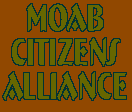

February, 1975My cousin Dave and I fly at nearly 9,000 feet across Dallas Divide in his little blue Dodge Dart, the ends of our skis banging against the roof. Dave's blonde hair sticks out from under his Alpaca hat, its long wool nobbin bouncing as the car blasts through late winter snow drifts. The tape player cranks out high-energy rock and roll, Deep Purple: “Somebody's shouting up on the mountain... Nobody's up there, it's a deception, when will I ever learn... I'm alone here, with emptiness, eagles, and stone...” All around us winter dawn splashes the wild ramparts of the San Juans with soft rose and lavender--Teakettle, Potosi, Sneffels--nothing but emptiness, eagles, and stone.
Sliding down the opposite side of the pass, we glide by our old haunt, the now-abandoned T-bar lift at Ski Dallas, the small family-run business sadly doomed by the new ski area in Telluride. After 10 years of hard work by its local owners, its demise was amazingly swift. The little one-room lodge slumps next to the highway, now home to mice and ghosts. It must have hurt to watch all the cars fly by on their way to Telluride, nobody stopping. Ski Dallas lift tickets cost only $2.50, for cryinoutloud!
We turn at Placerville, go up over Keystone Hill, then down to the intersection at Society Turn with its sign, “Telluride, the most beautiful spot on earth.” A right turn, gun up the steep hill, bounce in on the rough snow-packed road to the rustic Day Lodge, and we're here. Telluride, Colorado.
To us, the little lodge and the ski slopes are Telluride--not the somewhat depressing old mining town below, where winds periodically sprinkle everything with gray dust from the huge ashen tailings pile at the edge of town. Those tailings spill from the portal of the Idarado Mine and drift on down the deep box canyon. There's almost no one here but us, and after several runs down See Forever, we ride down to town on the new Coonskin Lift, tilting precariously forward, hungry for lunch. “We should buy one of those neat old Victorian houses down there,“ I tell Dave, gazing over the decaying rooftops below, chair rocking dangerously. In the distance hangs mysterious and graceful Bridal Veil Falls, timeless, frozen. “Why?” he asks. “They're cheap. We could buy a nice one for $30,000 and have a place to stay when we ski.” “What the hell, let's buy the whole damn town.”
If Dave and I'd had any foresight (and money), we would've bought the whole damn town. It could've been bought for the price of what a few houses there now cost, a mere 25 years later. (March, 2001 Telluride Daily Planet: For sale: Victorian on W. Columbia. 5 bed., 3 bath. $2,275,000.) We could’ve both retired young. But Dave and I were destined to be independently poor. That next year I graduated from high school and went to college. Dave, who was a few years older than me, dropped out of college and moved to Telluride, where he skied when he wasn't running Lift 2. After a few years, he got tired of living like a polar bear, as he put it, and moved back to Montrose, where he's now a flight instructor. Like most of our ski buddies, he rarely goes to Telluride now. No desire to go up there, it's ruined, he says. Bad enough having to fly over it once in awhile.
Dave grew up on a ranch near Telluride at an altitude of 8,500 feet, a ranch his dad bought right before Dave was born. Dave tells stories about his bedsheets freezing to the wall, about starting fires under their ranch vehicles to warm up the engine blocks in the winter--the sort of stories you'd expect to hear from some oldtimer up in Alaska. It was a tough but beautiful place to make a living. They called the place “Faraway Ranch.” Dave didn't spend much time in town, except for school. Telluride was boring to a kid like Dave. The only people he ever saw there were miners, an occasional “tourist” from places like Montrose, and a few hippies from California, whom he admired greatly, primarily because his dad didn't.
At the time, gold and silver mining had been the only reason most people even lived in high alpine strongholds like Silverton, Ouray, and Telluride. One early summer day while Dave was helping his dad move cattle to the high country, the reservationist for a flight from L.A. to Denver unwittingly altered Telluride's future by seating two fellow Aspenites next to each other. Both passengers were urban immigrants to Aspen, both well heeled. Joern Gerdts was a photographer and Joseph Zoline a Beverly Hills industrialist. Gerdts had recently discovered Telluride and was taken by its tourism and ski-area potential.
He and his wife invested in the area, then began a patient sales campaign. They first contacted Ernie Blake, owner of Taos Ski Area, and then Vail's Pete Seibert. Both said it was too far away from anywhere to be successful. Gerdts persisted. In 1967, he and his wife wrote and photographed an article for Skiing Magazine called “The Rockies-South: The Search for New Skiing.” The article asked, “Is there a financier in the audience?” So far Gerdts hadn't found one, but now he was seated on the plane next to Zoline. Far below, neither Dave nor anyone else in Telluride had any idea that change was in the air. Most were aware that the town had begun to attract a few outsiders, but nothing much had changed for years, and the fact that the town even still existed was due primarily to the Idarado Mining Company. Dave's dad had just taken a job at Idarado, trying to help tide things over--ranching was getting tougher and tougher.
Gerdts didn't bother to ask any Telluride locals if they were ready for the Great White Shark he was about to catch (long before Moab caught its own mountain-biking version). But odds are good that most Telluriders would have thought a ski area was a good idea--Idarado production was beginning to pinch out and the town was beginning to feel it. Telluride had no other economy--it was struggling, looking for a new raison d'être. Convinced by Gerdts' sales pitch on the plane, Joseph Zoline, the Great White, came to town in September of 1968 and immediately went on a real estate buying frenzy. He purchased options on the Gorrono and Adams ranches and started construction of a ski area. Snow-cat skiing was offered until the infrastructure could be built.
On December 23, 1972, the Telluride Ski Area officially opened with five chairlifts. Ski runs were named for the old mining claims on the mountain--Happy Thoughts, Zulu Queen, Cat's Paw, Misty Maiden, the Plunge. Most of the skiers were locals. Wanting to maximize his investments, Zoline also went into real estate development. By June of 1971, he filed the first plat (30 lots covering 120 acres) on the Ski Ranch subdivision. His next filings were Hastings Mesa Estates, Wilson Mesa Estates, and the Telluride Lodge. Telluride was reborn. Things were looking up.
Soon thereafter, the Idarado mine closed. Like its many sister towns in the San Juans, Telluride's mining era was now history, even though the mine tailings continued to haunt the town like the purported ghosts in the old opera house. Eventually, years later, the tailings were declared a Superfund site and capped.
With Idarado closed, Dave's dad no longer had a job, and the family was forced to call ranching quits. The ranch Dave's dad had bought 15 years earlier was sold for little more than what was owed on it, and the family moved to Montrose. There, his parents bought a house on the outskirts of town, a house surrounded by the kind of alfalfa fields that could have made a difference had they been at Faraway Ranch.
Last spring, while visiting Dave, I met another Idarado-Telluride refugee, the elderly Jim Quintana. Mr. Quintana had become friends with Dave's family while working at the mine and had also moved to Montrose upon Idarado's closing. Immersed in the scent of blossoming lilacs, everyone sat in the yard on lawn chairs under a golden weeping willow and talked about the good old days--living in Telluride, growing up in Telluride, the lovely green summers, the harsh but beautiful winters. Turning to me (the only one there who had never lived in Telluride), Mr. Quintana said, almost confidentially, “We lived in a little house on Pacific Avenue. We knew Telluride as a human dwelling place. I don't miss the cold, but I miss many other things. But that's all gone now. To my grandchildren it's just a place where their parents go to work.” Stopping to pick up a little willow catkin that had fallen to the grass, he continued, “It was a place of the heart. Pero sea lo que sea--what will be will be.”
By the mid '70s, the Telluride ski area was well on its way to local fame, with its 3,165 feet of vertical rise and its legendary views. But the 1976 season was a bust--no snow. The ski area was open for only a little over a month that year. Zoline wanted out. He approached Ron Allred and Jim Wells of Benchmark Corporation of Avon, and a deal was made. By now, newcomers (including the California hippies) ran the town, locals outgunned. These newcomers proved surprisingly loyal to preserving the old, but it didn't matter much. Allred and Wells knew they could attract the elite and wealthy by creating their own destination resort outside the town of Telluride itself. The town would come along for the ride whether it wanted to or not. Allred and Wells purchased yet more real estate and began planning an exclusive year-round resort. It would be called Mountain Village. Now nothing could stop the avalanche.
The early and mid 80s saw groundbreaking at Mountain Village, as well as the launch of a slick marketing magazine (Telluride Magazine), and the opening of the Telluride Regional Airport to commercial flights (pilots say touching down there is akin to landing on an aircraft carrier). Telluride was no longer remote. And though the town was used to avalanche threats, this was a new kind of avalanche, one that would leave many locals homeless, victims of high real estate taxes and prices. In May of 1992, the first hotel in Mountain Village opened its doors, the 177-room Doral Resort & Spa. It later became The Peaks Resort and Spa and has since been joined by a myriad of accommodations. In 1995, Mountain Village was officially incorporated.
Telluride was no longer alone deep in the San Juans--it now had a sister town, a town with no past, no poor, and no tailings. A “village” of 1,000 wealthy urban refugees, a town almost as large as Telluride itself (Telluride's 1998 population was 1528), a place where one could easily spend $2 million on a simple one-acre lot. Mountain Village now advertises itself as “a painstakingly crafted community that projects a European resort-town elegance while bringing together the finest elements of the New West.” What was not long ago Telluride, Colorado, was now simply Telluride. Like Aspen, Vail, Santa Fe, Taos, Jackson Hole, everyone knew where Telluride was.
W.C. Fields once said, “A rich man is nothing but a poor man with money.” Maybe this was true in Fields' day, but now the cultural differences between the truly rich and the middle class (yet alone the poor) have become vast. And anyone who doesn't understand the not-so-mysterious values of the wealthy should visit Telluride today. Visit the shops, have lunch. Drive the streets of Mountain Village. It’s a good test of your socio-economic comfort level (or socio-economic ambition). Remember that those who make this “elegant New West” resort town possible can't afford to live here.
According to a 1996 study conducted by San Miguel County, nearly one-third of the population of the county commuted to work in Telluride from places like Norwood, Naturita, Rico, and Ophir. Others come from as far as Montrose, Grand Junction, and even Cortez. As you complete your tour with a luxurious hot stone massage at Telluride's Mountain Message & Day Spa, ponder the significance of a recent study done by Pricewaterhouse-Cooper: "In 2001, two million to three million individuals in the U.S. control more than $8 trillion in investable assets, or one-third of the world's investable wealth." These are the rich who now own and, for the most part, control Telluride. Perhaps F. Scott Fitzgerald's assessment was accurate: "The rich are not like you and me."
July, 2000
Last summer, in a rare display of nostalgia, my cousin Dave and I hiked up the overgrown slopes of Ski Dallas. Standing on top, I thought I could hear the sound of the old truck engine that used to run the T-bar. It was probably just the wind--or more likely the constant run of construction and service workers commuting to Telluride from Ridgway and Montrose. Dave and I stood there for a while in the breeze, then, without a word, hiked back down and headed on up the road to Telluride. Dave wanted to see how Faraway Ranch was faring these days.
We turned off the highway onto the county road, winding below those unchanging San Juans with their sculpted iron-laden cirques and kettles and sudden lightning. On further up the lane, the same old rustic and dejected cattle sheds still lined the lower meadows, white mountain daisies growing tall against the weathered gray wood. As we rounded the hill to the upper meadows where the faded-yellow ranch house had once stood, Dave pulled the pickup over and stopped.
There before us, in unabashed opulence, sat a massive three-story log house, decks and glass gleaming in summer sun. We both sat quietly for a while, lost in our own thoughts. Finally turning to Dave, I noticed that he wasn't looking at the house, he was gazing at a long asphalt tennis court that stretched out further down slope, connected to the house by a winding path lined with recently-planted aspens.
Almost in a whisper, as if to not disturb any ghosts, Dave asked, “Remember Patches? That little paint gelding? He was my best friend when I was a kid, little Patches. You rode him a few times, remember? There wasn't a day went by that he and I didn't go for a ride in the summer. I always had an oatmeal-raisin cookie in my pocket for him--he loved oatmeal cookies. He had the most feathery soft muzzle."
Dave turned away, his eyes filling, and spat out the window. “Now there's a bloody tennis court on his grave. A bloody tennis court, of all things." Grinding the gears, he turned the truck around and headed back down valley to Montrose.
So long to Telluride of the heart.
POST SCRIPT (ADVICE TO MOAB): "Anyone pretending to be a guide through wild and fabulous territory should know the territory."
—— Wallace Stegner







